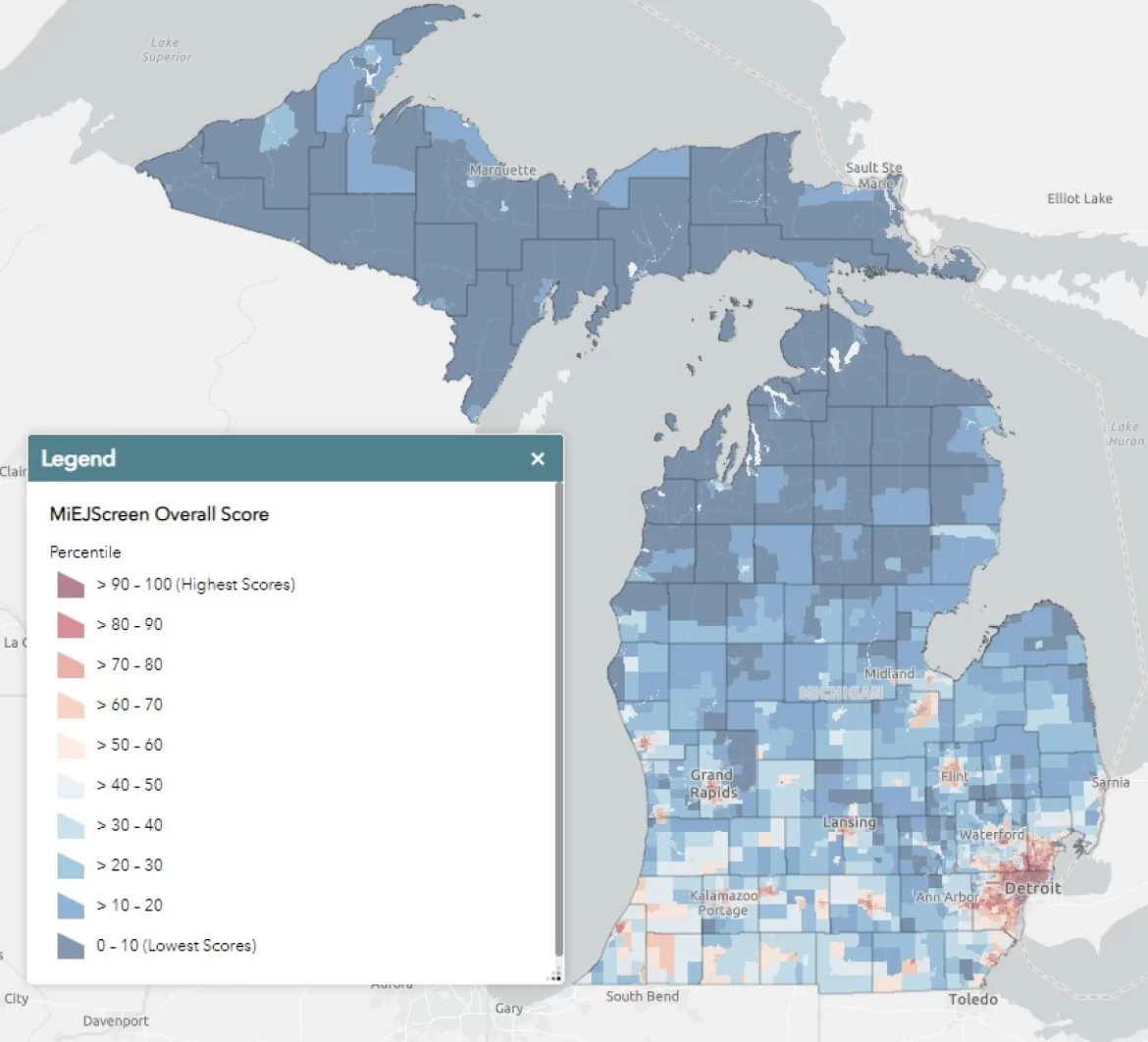By Elinor Epperson

ENVIRO JUSTICE DATA MAP: MiEJScreen is an online tool that maps how health and socioeconomic factors intersect with environmental contamination. Source: Michigan Department of Environment, Great Lakes and Energy
Michigan’s Department of Environment, Great Lakes and Energy has updated an online tool that maps which communities may be most susceptible to adverse effects from pollution.
The department first released MiEJScreen as a draft in 2022, but released an updated version in early August after seeking public comment.
It says it hopes the tool will make it easier for advocates, residents and government officials to understand how environmental contamination affects different populations in their community.
The tool combines data about health, socioeconomic and environmental factors to determine which communities are at higher risk of adverse effects from pollution.
The data reflect what residents have known for a while, Regina Strong said. She’s the department’s environmental justice public advocate.
“It really puts voice to and data to the stories and anecdotal information about communities that community members have shared for many, many years,” she said.
She said the information isn’t new or groundbreaking — but it is more accessible.
The department sought input from the state Advisory Council for Environmental Justice, the Interagency Environmental Justice Response Team, the public and academic experts.
“It’s a lot of information, and we want to make sure we’re presenting it in a way that is usable,” Strong said. The state has a detailed user guide and video tutorials demonstrating how to use the many layers of data available.
Juan Jhong Chung, the executive director of the Michigan Environmental Justice Coalition, said the tool needs to do more than inform.
“A tool like the one that EGLE has been working on can be really helpful, if it goes beyond just the informational,” they said. Residents affected by pollution often already know it, Jhong Chung said.
“If you walk around neighborhoods in Detroit and you talk to everyday people, they know what they’re going through in terms of health disparities,” Jhong Chung said. “There are so many issues related to clean air, clean water, access to those things.”
“Now, how can we actually translate that into policies that will effectively address those issues?” Jhong Chung said.
Strong said the tool is meant to help users “better understand what communities face and why,” not influence how state government makes decisions.
“It is not, in and of itself, a decision-making tool,” she said. “It is one of the many ways you can look at a community where a decision may be pending or where folks are looking to do [environmental justice] work.”
But that’s what advocates like Jhong Chung want to see from the state, and lawmakers and government officials have expressed interest in learning more about environmental justice issues.
“What we’re still waiting to see is more action,” Jhong Chung said, and increased investment in Michigan from the Inflation Reduction Act is encouraging — But there is always more to be done.”
Strong said the department state welcomes continued feedback from the public and intends to keep updating the tool. But it is unclear what other actions, if any, it will take in the near future.
Strong emphasized that MiEJScreen is the first step of many.
“We want folks to actually go to the communities, talk to people, hear about [their] lived experiences,” she said. “This is a tool in our toolbox to better address what we hear are ongoing concerns or things people share with our office that they want, you know, a deeper dive into.”
Elinor Epperson has an environmental reporting internship under the MSU Knight Center for Environmental Journalism’s diversity reporting partnership with the Mott News Collaborative. This story was produced for Michigan Public.
